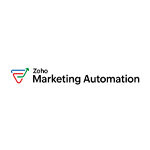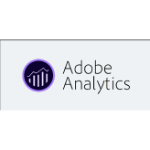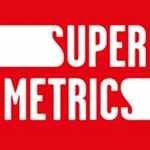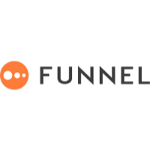TechnologyCounter provides genuine, unbiased real user reviews to help buyers make informed decisions. We may earn a referral fee when you purchase through our links, at no extra cost to you.
List of 15 Best Marketing Analytics Tools
Showing 1 - 15 of 69 productsGoogle Analytics is a web analytics tool provided by Google that allows businesses and website owners to track and analyze their websites performance. With its user-friendly interface and customizable reports, Google Analytics provides valuable insig...Read Google Analytics Reviews
Semrush is a and versatile digital marketing tool that provides valuable insights and data for businesses and marketers. With its user-friendly interface features, Semrush helps businesses to improve their online presence and reach their target audie...Read Semrush Reviews
Zoho Marketing Automation is a multichannel marketing software solution with features designed to ease the marketing process and generate sales-ready leads...Read Zoho Marketing Automation Reviews
Adobe Analytics is a data analytics platform that provides businesses with valuable insights and data-driven solutions. With its advanced features and customizable dashboards, Adobe Analytics helps companies make informed decisions and optimize their...Read Adobe Analytics Reviews
SimilarWeb Pro is a and innovative analytics tool that provides businesses with valuable insights and competitive intelligence for their digital strategy. With in-depth data features, SimilarWeb Pro helps drive informed decisions and fuel growth in t...Read SimilarWeb Pro Reviews
Supermetrics is a data management tool that amplifies business growth by simplifying the process of data analysis. With its user-friendly interface features, Supermetrics streamlines the collection, organization, and visualization of data from differ...Read Supermetrics Reviews
Improvado is a solution for marketers and data analysts looking to streamline their data management and reporting. With its user-friendly interface is a data integration capabilities, Improvado allows businesses to make data-driven decisions with eas...Read Improvado Reviews
Funnel is a tool for streamlining your sales and marketing process. This powerful software combines user-friendly design with advanced features to help your business reach new heights. Say goodbye to manual data entry and hello to efficient funnel au...Read Funnel Reviews
Whatagraph is a and user-friendly reporting platform that simplifies data visualization and analysis for businesses of all sizes. Say goodbye to scattered and confusing reports, and hello to comprehensive and insightful visualizations that will trans...Read Whatagraph Reviews
Mixpanel is the all-in-one analytics solution that helps businesses of all sizes make data-driven decisions. With its intuitive and user-friendly interface, Mixpanel provides real-time insights into user behavior, allowing companies to understand and...Read Mixpanel Reviews
NinjaCat, the ultimate cross-channel marketing reporting and monitoring software. With its robust features interface, NinjaCat simplifies campaign tracking and allows users to efficiently manage data from multiple platforms. Streamline your marketing...Read NinjaCat Reviews
DOMO is a software that empowers businesses to make data-driven decisions with ease. Its user-friendly interface and powerful analytics tools make data management and visualization a seamless process. With DOMO, companies can gain valuable insights,...Read DOMO Reviews
Matomo is a web analytics platform that provides essential insights into user behavior on your website. With its advanced tracking capabilities and user-friendly interface, Matomo enables businesses and organizations to make data-driven decisions and...Read Matomo Reviews
TapClicks is a marketing intelligence and analytics platform that helps businesses of all sizes gather and analyze data from various sources to make informed decisions and optimize their marketing efforts. With an easy-to-use interface and a wide ran...Read TapClicks Reviews
Adverity is a software that simplifies and streamlines the way businesses handle data. With Adverity, you can say goodbye to complicated data management processes and hello to efficient and effective analysis. Be prepared to take your data game to th...Read Adverity Reviews
- What Is Marketing Analytics Tools?
- Top Reasons Why Businesses Need Marketing Analytics Tools?
- What Are the Top Key Features of Marketing Analytics Tools?
- What Are the Top Benefits of Marketing Analytics Tools?
- What Are the Steps to Choose the Right Marketing Analytics Tools?
- What Are the Types of Marketing Analytics Tools for Different Industries?
- What Are the Technology Trends for Best Marketing Analytics Tools?
- What Are the Deployment Options for Marketing Analytics Tools?
What Is Marketing Analytics Tools?
Marketing Analytics Tools assist firms in measuring, analyzing, and comprehending customer behavior and performance across many marketing channels, including email, social media, pay-per-click (PPC) advertising, online traffic, and display advertising.
Best marketing analytics tools and technologies are used to track how people connect with a company's marketing activities, such as which campaigns drive the most sales, how customers learn about the company, and how customers interact with the material.
Analytic tools for marketing can also assist in determining which client categories are the most profitable, which content is the most popular, and what customers do after interacting with a marketing campaign. This information can then be utilized to make marketing decisions including when to launch a campaign, how much to spend, and where to target clients.
Marketing analytics software can also assist organizations in optimizing their consumer outreach efforts by analyzing customer data.
Top Reasons Why Businesses Need Marketing Analytics Tools?
1. Analytic tools for marketing identify trends in client behaviour and direct marketing efforts towards those areas.
2. Evaluate the efficacy of marketing efforts and their return on investment (ROI).
3. Learn about client preferences and interests to improve segmentation and targeting.
4. Use data-driven analytics to predict customer behaviour and inform decisions.
5. Compare and track the marketing activity of competitors.
6. Examine consumer interactions both online and offline, such as website visits, social media involvement, and purchases.
7. Determine the age and kind of customer that responds best to a specific marketing message.
8. Improve ad campaigns, budgets, and resources.
9. Investigate prospective new markets and product categories to narrow down growth plans.
10. Determine customer attitudes towards a brand or product.
11. Experiment with fresh advertising and messaging tactics.
12. Simplify operations and automate marketing tasks.
13. Monitor customer feedback and apply the data to improve marketing performance on an ongoing basis.
14. Examine your efforts in search engine optimisation (SEO) and search engine marketing (SEM).
15. Look for multipurpose marketing opportunities to increase sales and engagement.
What Are the Top Key Features of Marketing Analytics Tools?
1. Scalable reporting: Many marketing analytics platforms include scalable reporting capabilities, providing users with real-time access to data and insights. Marketers may use this to easily uncover client segments, view customer journeys, and optimise advertising.
2. Automated analysis: Automated analysis skills enable marketers to quickly and efficiently find opportunities, trends, and insights from massive amounts of data.
3. Predictive insights: With user behaviour data, powerful predictive analytics features are used to discover new consumer trends, customer categories, and opportunities.
4. Smart segmentation: Marketers can use smart segmentation tools to find and establish target audiences for personalised advertising.
5. Data visualisation: Data visualisation skills enable marketers to visually present vast amounts of data. This enables marketers to make better judgements regarding their campaigns based on data insights.
6. A/B testing: A/B testing skills are used to determine the most effective version of a marketing campaign. This can assist marketers in increasing the success of their campaigns.
7. AI-driven insights: AI-driven insights are used to uncover patterns in customer behaviour and new revenue prospects.
What Are the Top Benefits of Marketing Analytics Tools?
1. Better Decision Making: The usage of analytic tools for marketing allows firms to analyse enormous volumes of data in order to make more informed decisions. This can assist businesses in making more considered and precise decisions.
2. Better Targeting: Marketing Analytics Tools allow firms to more properly segment their target audience and offer them with the resources to develop more personalised marketing communications.
3. Enhanced Personalization: By leveraging consumer data, firms can send out communications that are more personalised to their customers, resulting in brand loyalty and a higher conversion rate.
4. Improved Visibility: Marketing analytics provide firms with a comprehensive perspective of their performance, including customer journey analytics, which provide insight into customer behaviour.
5. Improved Customer Retention: Companies are better equipped to identify consumers who are likely to leave and take the required actions to keep them engaged and satisfied.
6. Increased ROI: By using marketing analytics software, organisations may optimise their marketing spend and maximise their return on investment.
What Are the Steps to Choose the Right Marketing Analytics Tools?
1. Establish goals: Analytics tools marketing is critical to first comprehend and identify your goals for using a marketing analytics platform. Top marketing analytics tools will aid in determining the metrics, key performance indicators (KPIs), and data types required for analysis.
2. Identify key factors: After determining the desired goals, Analytics tools marketing is critical to determine the factors that contribute to an efficient Marketing Analytics Tools. Data source connectivity, visual robustness, targeted audience analysis, customer segmentation capacity, and automated reports are examples of these.
3. Review options: Once the characteristics and necessary capabilities have been established, the following step is to examine the market's top marketing analytics tools and possibilities. Review and analyse the features, benefits, and limitations of various technologies to ensure that your investment yields successful outcomes.
4. Select the right tool: After comparing the features and benefits to your intended aims, choose the best instrument that offers the best outcomes. When making a final decision, keep the cost, implementation timeline, maintenance, and training requirements in mind.
5. Implement the tool: Once you've identified and chosen the right marketing analytics software, the next step is to put them into action. To achieve optimal productivity, incorporate the technology into your business strategies, procedures, and analytics programmes.
6. Monitor results: Finally, it is critical to monitor and assess the marketing analytics tools' results. Best marketing analytics tools allows a company to see how the tool is functioning in comparison to the desired aims. This enables timely changes and updates to maximise efficiency.
What Are the Types of Marketing Analytics Tools for Different Industries?
When it comes to top marketing analytics tools, the sorts of tools available vary by industry. E-commerce, retail, and hotel businesses, for example, will employ technologies such as purchase history analysis, cost-per-click analysis, and revenue analysis. Marketing analytics software assist them in better understanding customer behavior, optimizing marketing efforts, and allocating resources.
To track audience engagement and customer habits, social media industries will frequently utilise sentiment analysis tools or applications like Hootsuite or Sprinklr. Analytics technologies can be used in the financial services and banking industries to track customer experience and sentiment, find upsell opportunities, do account analysis, analyze customer life cycles, and develop customized content.
Analytics technologies will also be used in the healthcare sector to track patient history and treatment outcomes, analyze healthcare trends, improve patient outreach, and evaluate adherence to medical guidelines. Finally, churn rate analytics, student retention, and achievement marketing analytics software will be prioritised in the education sector.
What Are the Technology Trends for Best Marketing Analytics Tools?
The technology trend for best marketing analytics tools include the following:
1. Cloud Technology - Cloud computing is gaining popularity in marketing analytics since it allows data to be shared across numerous organisations and viewed from anywhere. Analytics tools marketing also allows data scientists to quickly construct prototypes and test models without requiring vast amounts of internal processing power.
2. Artificial Intelligence / Machine Learning - Machine learning is increasingly being utilised in marketing analytics to generate predictive models and projections, as well as to analyse customer behaviour from massive datasets.
3. Data Visualisation - Because analytics tools marketing aids in the identification of patterns and correlations, data visualization has become an increasingly significant aspect of interpreting data in marketing analytics. Furthermore, data visualization tools help non-technical professionals grasp and analyse analytics results.
4. Natural Language Processing (NLP) - NLP is a sort of artificial intelligence technology that is used to analyse text data. It can be used to categorise client sentiment and track down customer complaints. This can be useful in developing client retention tactics.
5. Predictive Analytics - Predictive analytics allows businesses to use historical data to forecast future trends and customer behaviour. This can be used to construct more targeted marketing strategies and to more effectively prioritise consumer groupings.
What Are the Deployment Options for Marketing Analytics Tools?
Marketing Analytics Tools deployment choices vary based on the tool. These technologies can generally be installed on-premises using the organization's own servers, in the cloud, or as a hybrid solution.
1. On-premises adoption typically necessitates the organization's maintenance and operation of the analytics infrastructure, which includes servers, storage, and software. This might result in significant expenses, as well as the necessity to hire experienced experts for maintenance.
2. In general, cloud deployment alleviates the load of hardware and software maintenance.
The cloud service provider maintains and operates all hardware and software components, which may be readily extended and scaled as needed. Costs for this type of setup can vary depending on usage.
3. Hybrid solutions bring the advantages of both on-premises and cloud deployments together. Many organizations can keep ownership of their data and IT infrastructure while still utilizing the cloud for analytic tools for marketing operations such as data processing, storage, and visualization. Depending on demand, this form of setup may incur costs similar to the cloud.















